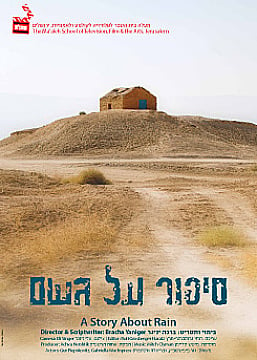Chinese Classical Dance Dunhuang & Long Sleeve
A form of Chinese dance that draws sources from body movements and hints at the deep meaning of Buddhism
Series Intro
With beautiful sights and sounds, this series provides a rare glimpse into Chinese culture through the introduction of seven representative dance forms. It traces the historical and geographical roots of the dance traditions in China and looks into what inspires people to create dance, how contemporary artists breathe new life into the dance traditions, as well as the distinguishing features and techniques of each dance form. Featuring internationally recognized Chinese dance master, choreographer and director Yang Liping and internationally acclaimed dance choreographer Zheng Jigang.
Description
Dunhuang Dance is a form of Chinese dance that draws sources from body movements depicted in artifacts found in Dunhuang Mogao Caves. Located in Gansu Province of China, along the Silk Route, at the crossroads of trade as well as religious, cultural and intellectual influences, the seven hundred and thirty five caves are famous for their statues and fresco paintings, spanning 1,000 year of Buddhist art. Thousand Hand Guan Yin, a representative of Dunhuang Dance featured in this program is a contemporary creation conceived by the renowned Chinese choreographer, ZHANG Jigang, and produced by the China Disabled Performing Art Troupe. In this dance, a group of hearing-impaired dancers effectively utilize their body language to communicate the magic of "thousand hands" and hints at the deep meaning of Buddhism, its luminescence and boundless love. Long Sleeve Dance provides an overview of the historical development of Long Sleeve Dance, a dance form dating back to the 7th century B.C.E, a time that is known as the Spring-and-Autumn period in Chinese history. It introduces a handful of codified language of Long Sleeve Dance. Highlighted are the long Sleeve dance performances titled The Colors of Water choreographed by WANG Yukun and MIAO Xiaolong and Zhao Jun Departs the Frontier choreographed by JIANG Huaxuan. In Zhao Jun Departs the Frontier, LIU Min, a nationally acclaimed dance master, employes exquisite language of Long Sleeve to convey the conflicted emotions of ZHAO Jun (one of "The Four Beauties" known in Chinese History) as she Leaves her homeland and lavish lifestyle for the grasslands of the remote north as part of peace treaty. The dance tells an ancient story of loyalty, heroism and self-sacrifice for the common good.
Description
Dunhuang Dance is a form of Chinese dance that draws sources from body movements depicted in artifacts found in Dunhuang Mogao Caves. Located in Gansu Province of China, along the Silk Route, at the crossroads of trade as well as religious, cultural and intellectual influences, the seven hundred and thirty five caves are famous for their statues and fresco paintings, spanning 1,000 year of Buddhist art. Thousand Hand Guan Yin, a representative of Dunhuang Dance featured in this program is a contemporary creation conceived by the renowned Chinese choreographer, ZHANG Jigang, and produced by the China Disabled Performing Art Troupe. In this dance, a group of hearing-impaired dancers effectively utilize their body language to communicate the magic of "thousand hands" and hints at the deep meaning of Buddhism, its luminescence and boundless love. Long Sleeve Dance provides an overview of the historical development of Long Sleeve Dance, a dance form dating back to the 7th century B.C.E, a time that is known as the Spring-and-Autumn period in Chinese history. It introduces a handful of codified language of Long Sleeve Dance. Highlighted are the long Sleeve dance performances titled The Colors of Water choreographed by WANG Yukun and MIAO Xiaolong and Zhao Jun Departs the Frontier choreographed by JIANG Huaxuan. In Zhao Jun Departs the Frontier, LIU Min, a nationally acclaimed dance master, employes exquisite language of Long Sleeve to convey the conflicted emotions of ZHAO Jun (one of "The Four Beauties" known in Chinese History) as she Leaves her homeland and lavish lifestyle for the grasslands of the remote north as part of peace treaty. The dance tells an ancient story of loyalty, heroism and self-sacrifice for the common good.
Directors: Ming Chen, Sandra Parks, Jack McNeill
Producers: Ming Chen, Sandra Parks, Stella Xu
הפריט כבר התווסף
מסלול של כבר קיים בסל הקניות שלך!
לחצו על המשך כדי להחליף את מסלול הרכישה.














